Our Approach
While the solutions we develop are cutting-edge, our approach to projects is what truly sets us apart. Our team is committed to your success, and we understand the importance of leaving no stone unturned.
A Meticulous Approach to Your Most Complex Operational and Design Challenges

Discover
We begin by understanding and documenting our client’s challenges and our solution approach
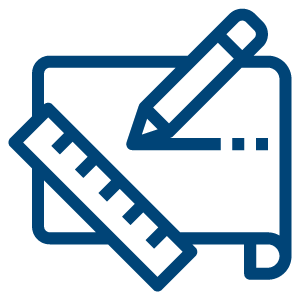
Develop
We develop custom solutions that address the questions identified during the discovery phase

Analyze
We analyze results and translate them into insights that inform our client’s decisions

Support
We provide ongoing support and training to ensure the solution continues to provide value
Project Teams
We assign a dedicated project team who will work with you every step of the way. Our project teams typically include a project lead and at least two modelers. At times we also assign a technical lead in addition to the project lead, and bring in senior consultants with relevant experience as-needed.
We typically assign at least two modelers to every project. Our paired programming approach streamlines solution development by minimizing mistakes and rework, and significantly reduces planning, development, and debugging times. This approach also protects our clients against unexpected turnover by ensuring a second modeler is intimately familiar with your system and can continue to develop and maintain the solution without delaying project timelines or deliverables.

Project Approach
Overview
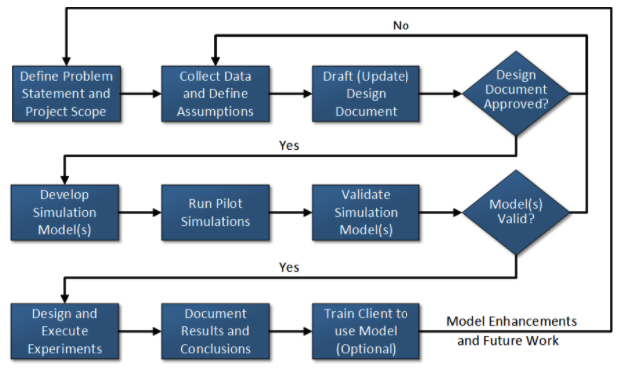
Simulation can be used to validate, analyze, and improve the design of virtually any system or facility. Our simulation projects are designed to address all of our client’s stated objectives, and include all required software development, data analysis, documentation, and training. We develop our simulation solutions using a data-driven approach. Our simulation projects typically include the tasks described here.
Draft Design Specifications Document

Our simulation projects typically begin with our project team attending kickoff meetings with client key personnel to collaboratively define the solution objectives, scope, assumptions, data requirements and specifications, and business rules.
Developing the design document is the single most important task, as it defines and dictates all technical work we perform and serves as a mutually accepted agreement of the technical requirements that the solution will fulfill.
Collect and Analyze Data

We work with client key personnel to collect the data required to drive the simulation. The required data are defined during the design document phase, and consist of the data necessary to capture all important components of the system at an appropriate level of detail. Data may be collected from client IT systems such as ERP and/or MES software, client-maintained spreadsheets or databases, or from client competency leads.
We then thoroughly review and analyze the data to ensure it is complete, valid, and aligned with the design specifications. We communicate any erroneous or invalid data for resolution, and repeat this process until all data is complete and valid. Data collection and analysis may continue into and be performed in parallel with solution development and validation.
Develop and Validate Solution(s)

Once the design document is completed and sufficient data has been collected, we develop custom simulation solutions that address the objectives, assumptions, and logic defined in the design document.
Solutions that evaluate existing systems may be validated by comparing outcomes from the real system to solution results for the same scenario. If the solution results are sufficiently consistent with the outcomes observed in reality, the solution is deemed valid and results from alternative scenarios can be trusted. Solutions that evaluate proposed systems are validated by sharing outcomes for a given scenario with client competency leads and obtaining stakeholder approval.
Once the solution has been validated, it can be used to answer almost any what-if question through experimentation, and optimization can be used to determine the best operating policies and procedures.
Conduct Experiments and Analyze Results
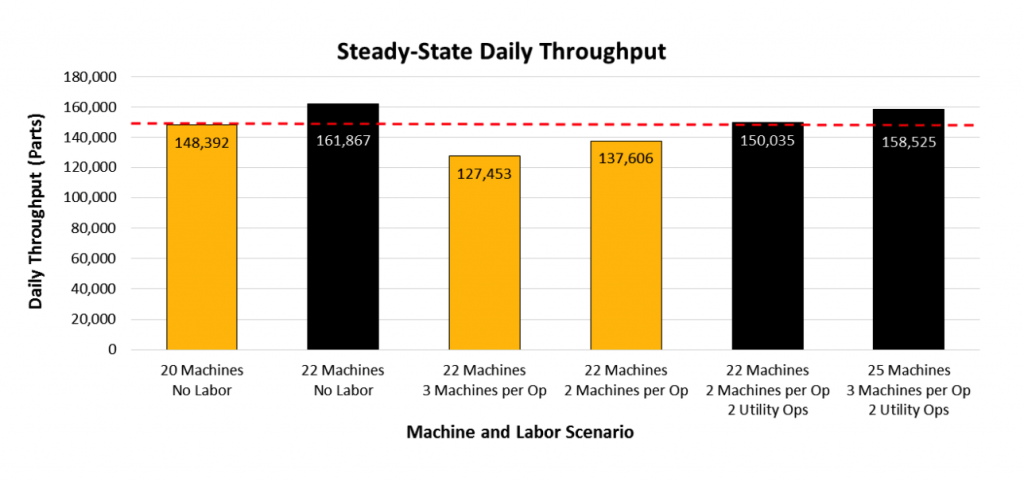
Once the solution is validated, we can begin using it to conduct sensitivity analyses, experiments, and optimization to address client objectives. These analyses may be used to determine the equipment or staffing levels required to meet projected demand, or determine recommended operating policies for meeting certain performance objectives under existing system conditions. Countless types of analyses can be performed with our simulation solutions.
Document Results and Key Takeaways

We document all pertinent results and key takeaways gleaned during the solution development and experimentation phases. We often gain valuable insights into the dynamics of the underlying system during solution development that were not originally considered. We document these insights to facilitate the understanding of project stakeholders.
We also document all pertinent results generated by the analyses, experiments, and optimizations conducted to address the stated project objectives, as well as the associated key takeaways and recommendations. Once the solution documentation is complete, we meet with project stakeholders to present the results and key takeaways of the simulation project.
Deploy Solution as an Operational Tool (Optional)
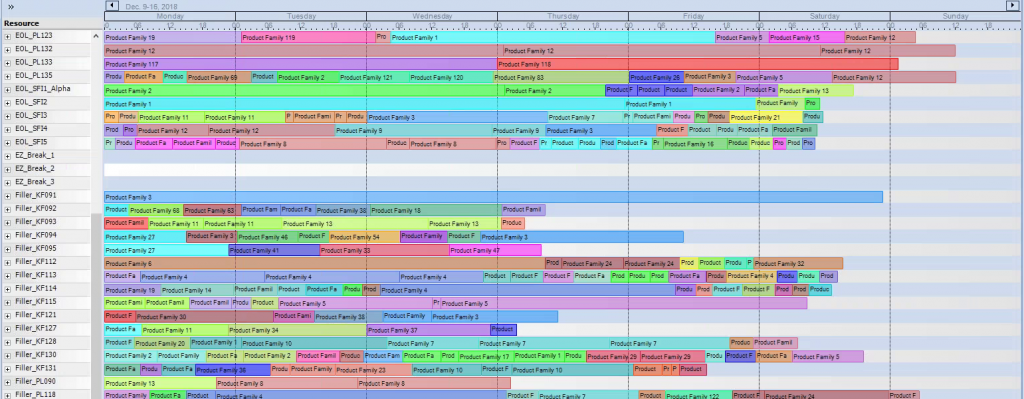
Our simulation projects may include deploying the simulation solution as an operational tool for active decision making. This is a core component of all scheduling projects, but may also be important for other applications. Deploying the solution may involve integration with client IT systems, or simply training client key personnel to utilize the solution for recurring decisions.
We provide several options for deploying our solutions. Clients may elect to access and use the solution as a desktop application or via a web-based portal. Our solutions can also be configured to run interactively or in the background (i.e., headlessly) depending on specific needs and requirements. The solution may also be configured to run automatically any time data is extracted from client IT systems.
Training (Optional)

Our simulation projects may include optional training. We train client personnel to update and use the solution to perform independent analyses. Training may include drafting or updating instructional documentation, such as a model user guide, which explains how to update model input data, options, and parameters in order to evaluate alternative system configurations and conduct analyses and/or experiments.
We may also conduct interactive training sessions with key project stakeholders to demonstrate how to update and run the solution and analyze results. These interactive training sessions may be recorded and provided to the client for ongoing use.
Data-Driven Approach
We develop our solutions using a predominately data-driven approach. Wherever possible, input data and parameters are maintained in one or more external data files (e.g., an Excel spreadsheet). Additionally, we do not strictly rely on the default output reporting features built into most simulation software programs. Our solutions output results to external data files. This approach enhances our solutions with front-end and back-end data interfaces that are familiar to our clients. Client personnel do not require familiarity with the underlying software in order to update input parameters, conduct experiments, or review and analyze results.
Example of input parameters that can be changed using the data interface include:
- product definitions and routings
- equipment specifications and configurations
- staffing levels and schedules
- scheduling algorithms and dispatching rules
- setup and processing times
- other parameters that affect operating conditions
Our solutions can optionally be integrated with external files generated by IT systems, allowing clients to update information in a familiar software environment and propagate that information to the solution on-the-fly.
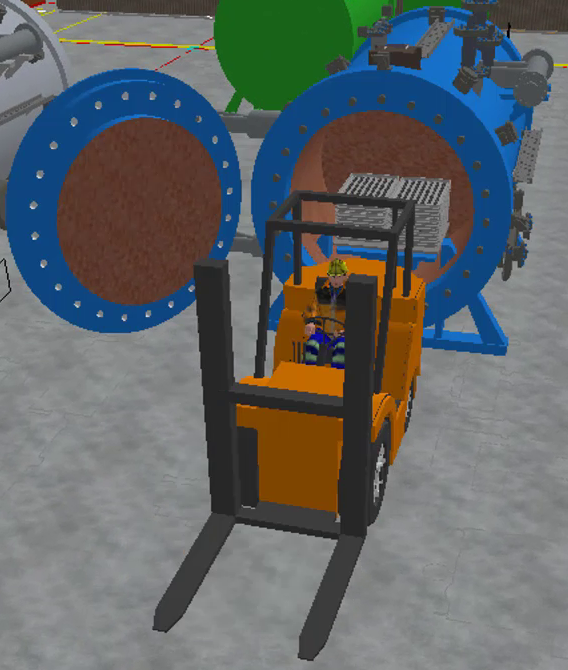
Reusable Modeling Constructs and Document Templates
We develop all of our solutions to be as generic as possible, and maintain a growing array of intellectual property, including custom objects and logic. Whenever possible, we reuse and adapt objects and logic from our internal library to streamline solution development, reducing the costs and time required to complete projects.
Additionally, most projects require the use of data that defines the underlying system and operations. Data specifications often share common constructs, features, and formats. Our many years of experience developing data-driven solutions allows us to understand the data required to achieve the project objectives and deliver maximum value to our clients. We maintain a growing portfolio of data specifications and can reuse them as-needed.
We also maintain an extensive array of document templates to streamline documentation. These include templates for design specifications documents, technical reports and memoranda, presentations, and user guides. We leverage these templates to streamline documentation and minimize associated costs.
Related Content
Learn how we have helped our customers improve their designs and operations.
We leverage industry leading simulation software tools to develop custom solutions for your business.
Get to know SIMCON and our team.